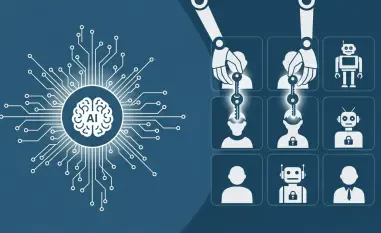The European Union is taking significant steps to enhance cybersecurity across its member states with the introduction of two new directives: NIS2 (Network and Information Security Directive) and DORA (Digital Operational Resilience Act). These regulations are designed to elevate cybersecurity standards, enforce stricter compliance measures, and ensure that organizations are better prepared to handle cyber threats. The increasing frequency and sophistication of cyberattacks have necessitated a more coordinated and robust approach to cybersecurity. This article will delve into the structure, objectives, and implications of NIS2 and DORA, particularly focusing on their impact on the finance sector and the broader organizational landscape within the EU.
Elevating Cybersecurity Standards
NIS2 and DORA aim to establish a standardized set of cybersecurity practices across the EU. NIS2 is sector-agnostic, meaning that it applies to all organizations within the EU, regardless of their industry. This directive emphasizes proactive risk management, incident reporting, and supply chain security. By contrast, DORA is specifically targeted at the finance sector, requiring comprehensive frameworks to manage ICT risks, conduct continuous testing, and evaluate third-party partnerships. This elevation in cybersecurity standards is expected to lead to a more secure digital landscape across the EU, providing a strengthened defense against cyber threats and vulnerabilities.
The introduction of these regulations marks a substantial shift towards a more structured and enforceable framework for cybersecurity. Organizations are now mandated to adhere to high standards of security, ensuring that they are better equipped to handle cyber threats. The directives seek to instill established best practices within a more rigid framework, facilitating a culture of continuous risk management and proactive cybersecurity measures. By promoting these advanced security practices, NIS2 and DORA are set to elevate the overall security posture of organizations, making them more resilient and better prepared for future cyber incidents.
Enhanced Accountability and Enforcement
A critical update in both NIS2 and DORA is the enhanced enforcement measures and penalties for noncompliance. The responsibility for cybersecurity is being pushed up to the executive level, compelling boards and management teams to play a significant role in risk management. This shift in accountability ensures that cybersecurity is not merely an IT issue but a core aspect of organizational governance. With these directives, the era of viewing cybersecurity as a technical problem handled solely by IT departments is over. Instead, it becomes a strategic priority that requires the attention and oversight of top-level executives, driving a holistic approach to security.
By placing accountability on management boards, both regulations seek to drive a top-down approach to security. This involvement is expected to result in better-informed decisions, improved governance frameworks, and ultimately, a more integrated approach to risk management across organizations. The enhanced enforcement measures also mean that organizations can no longer afford to be complacent about cybersecurity. Noncompliance with these directives could result in significant penalties, further emphasizing the need for diligent adherence to the new standards. As a result, boards and executive teams must develop a deep understanding of their organization’s cybersecurity posture and engage actively in formulating and overseeing security strategies.
Focus on Supply Chain Security
Both NIS2 and DORA stress the necessity of securing the supply chain and managing third-party risks. For NIS2, this requirement expands to organizations of all sectors, while DORA demands rigorous assessments of third-party IT service providers within the financial sector. This focus on supply chain security is crucial, as vulnerabilities in third-party systems can pose significant risks to organizations. In the interconnected digital landscape, a weak link in the supply chain can lead to substantial security breaches, emphasizing the importance of this directive. The attention given to securing the supply chain reflects the complexities and interconnectedness of modern business ecosystems.
Companies are expected to reassess and potentially restructure their supply chains to ensure compliance with these new regulations. This shift could lead to the emergence of more secure, transparent, and resilient supply networks across sectors. The emphasis on third-party risk management is a significant trend that is likely to shape the future of cybersecurity practices. Businesses must evaluate their partners, vendors, and other external entities with increased rigor, ensuring that they meet the high standards required by NIS2 and DORA. This might involve extensive audits, continuous monitoring, and collaboration to address any identified vulnerabilities.
Proactive Risk Management
By mandating proactive frameworks for risk management, both NIS2 and DORA are steering organizations towards continuous monitoring, threat detection, and incident response. This proactive approach ensures that organizations are not merely reacting to cyber threats but are actively working to prevent them. The mandates require a dynamic and continuous risk management process that integrates real-time threat intelligence and comprehensive incident response strategies. This shift is critical in an era where cyber threats are increasingly sophisticated and persistent, necessitating an agile and responsive security posture.
The shift from mere compliance towards fostering a culture of continuous risk management is a common thread that runs through both directives. Organizations are encouraged to adopt best practices and integrate risk management into their core policies. This cultural shift is expected to lead to a more resilient and secure organizational framework. By embedding these proactive measures into the daily operations, companies can better anticipate, detect, and mitigate threats, ultimately reducing the potential impact of cyber incidents. Such a proactive stance moves beyond traditional static defense mechanisms, advancing toward a more adaptive and resilient security paradigm.
Sector-Specific Focus on Finance
While NIS2 applies broadly across all sectors, DORA has a stringent focus on the finance sector. This focus reflects the heightened risk and critical nature of financial services. Financial entities are required to adhere to both sets of directives, potentially leading to a more robust security posture within the sector. The finance sector’s integral role in the economy and its susceptibility to cyberattacks necessitates these rigorous standards, ensuring that financial institutions can withstand and rapidly recover from disruptive cyber incidents. This comprehensive regulatory approach aims to protect not just the institutions themselves but also the broader financial ecosystem and its stakeholders.
The dual regulatory requirements for the finance sector mean that financial institutions must invest in comprehensive risk management frameworks, continuous testing, and third-party assessments. This sector-specific focus is expected to enhance the overall security of financial services, protecting them from escalating cyber threats. Financial institutions will need to allocate substantial resources to meet these stringent requirements, including the incorporation of advanced technologies and specialized expertise. This investment, though significant, is crucial for developing a robust and resilient security infrastructure capable of defending against sophisticated cyber threats targeting the finance sector.
Technological Investments for Compliance
Investments in technology are deemed essential for meeting the new regulatory requirements set forth by NIS2 and DORA. Organizations are expected to invest in threat intelligence platforms, integrated risk management systems, and third-party risk management solutions. These technologies not only facilitate compliance but also enhance the overall security posture of organizations. The technological advancements offer tools and capabilities crucial for real-time threat detection, risk assessment, and incident response, thereby supporting the proactive risk management frameworks mandated by the directives. This integration of technology into cybersecurity strategies represents a fundamental shift toward more resilient and adaptive security practices.
The technological dimension of compliance is thoroughly explored in the article, highlighting the importance of robust technological frameworks for risk monitoring and compliance. By investing in the right technologies, organizations can ensure that they are well-prepared to meet the new regulatory standards and protect themselves from cyber threats. Advanced security technologies such as Artificial Intelligence (AI) and Machine Learning (ML) are particularly valuable, providing sophisticated analytics and automated response capabilities. These investments are not merely about adhering to regulatory demands but also about building a stronger, more agile defense against the evolving threat landscape.
Board Involvement and Governance
The involvement of boards and executive management in cybersecurity is a key aspect of both NIS2 and DORA. By placing accountability on management boards, the regulations seek to drive a top-down approach to security. This involvement is expected to result in better-informed decisions, improved governance frameworks, and ultimately, a more integrated approach to risk management across organizations. The article underscores the importance of board involvement in cybersecurity, highlighting the shift from seeing cybersecurity as a solely technical issue to recognizing it as a critical component of organizational governance and strategy.
Ensuring that cybersecurity is a core aspect of organizational governance is essential for creating a more secure and resilient organization. Both regulations aim to instill a more systemic and strategic approach to managing cyber risks. Boards and executive teams must take an active role in overseeing cybersecurity policies and practices, ensuring that risk management strategies are comprehensive and effectively implemented. By fostering a culture of resilience and proactive risk management, organizations can more effectively safeguard their operations, data, and stakeholders from the increasing prevalence and complexity of cyber threats.
Conclusion
The European Union is making significant strides to bolster cybersecurity within its member nations through the rollout of two new directives: NIS2 (Network and Information Security Directive) and DORA (Digital Operational Resilience Act). These directives aim to raise cybersecurity standards, impose stricter compliance requirements, and ensure that organizations are better equipped to combat cyber threats. Given the increasing frequency and sophistication of cyberattacks, a more coordinated and robust cybersecurity strategy has become imperative. This article delves into the framework, goals, and implications of NIS2 and DORA, emphasizing their effects on the financial sector and the overall organizational landscape within the EU. By enhancing resilience and preparedness against cyber threats, these directives are expected to offer a more secure environment for digital operations, ensuring that both public and private entities are up to the mark in safeguarding sensitive information and maintaining operational continuity in a digitally-driven world.













